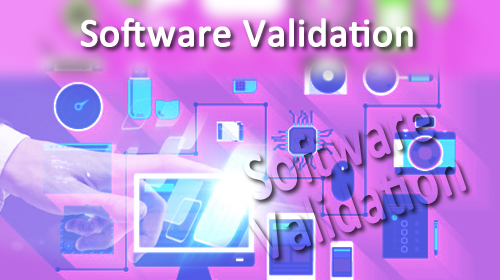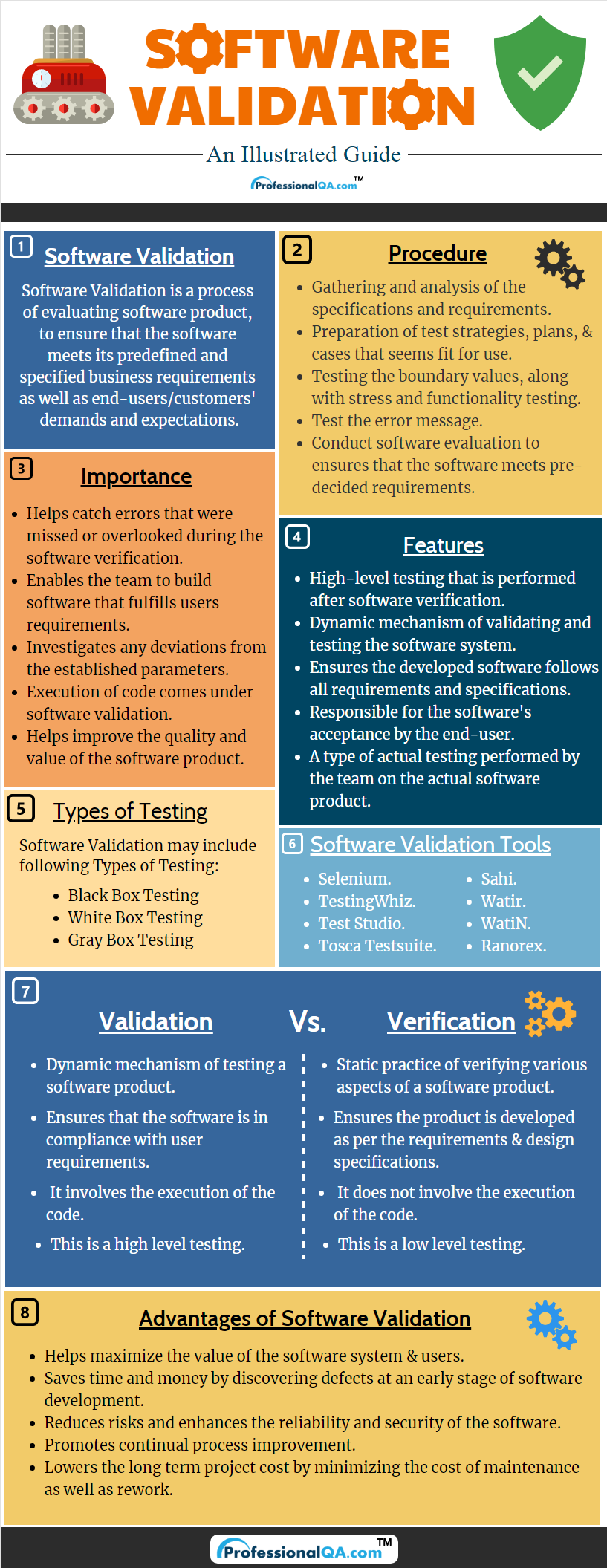


Software Validation is a process of evaluating software product, so as to ensure that the software meets the pre-defined and specified business requirements as well as the end users/customers' demands and expectations.
It is basically, performed with the intent to check that whether the developed software is built as per pre-decided software requirement specifications (SRS) and if it caters to fulfil the customers' actual needs in the real environment.
Both, the verification and validation is a software testing activity, and verification is followed by the validation. Validation is usually carried out at the end of the software development.
Validation is an actual testing performed on the software product. It gives answer to our query of "Are we developing the right software product?" Further, it also ensures the identification of defects that were got missed during the verification process.
As stated earlier, validation is the actual testing performed on the software product. Thus, it requires proper testing strategy. According to ISO/IEC 12207:2008, validation process includes:
Validation is an actual testing performed on the software product and it answers our query of "Are we developing the right software product?" Furthermore, it ensures the identification of defects that were missed by the testing team during the verification process. Other features that define software validation are:
From ensuring the fulfilment of particular requirements of a specific intended use to investigating any deviations from the established parameters, there are various reasons for performing software validation. Other reasons for implementing software validation are:
During the process of software validation, the team performs three types of tests on the software to ensure that the it meets the requirements of the users as well as the other stakeholders of the product. These three types of testing are:
It is a technique of assessing the software's working, on the basis of available specifications only, and being unaware of knowledge and understanding of the internal features and structure of the software.
It involves testing of software's functionality, with the knowledge of internal working and structure of the software, by the testers.
Gray-Box Testing is a combination of black-box testing and white-box testing approach, that enables to evaluate the functionality of the software, externally, from users-perspective, by executing test plans and cases, prepared from limited knowledge of the internal features, functionality or details of software.
Apart from above testing methodologies, it also includes smoke, regression, functional, system and user acceptance testing.
To get a better understanding of software validation, it is essential for us to perform a comparison of validation with its counterpart software verification.
| Software Validation | Software Verification |
| 1. Validations is a dynamic mechanism of testing a software product. | 1. Verification is a static practice of verifying various aspects of a software product. |
| 2. Ensures that the software is in compliance with user requirements. | 2. Ensures that the product is developed is as the requirements and design specifications. |
| 3. It involves the execution of the code. | 3. It does not involve the execution of the code. |
| 4. It is performed by the testing team. | 4. It is performed by the QA team. |
| 5. Involves white box testing, black box testing and gray box testing. | 5. It involves reviews, meeting and inspections done by the QA team. |
| 6. This is a high level testing. | 6. This is a low level testing. |
To find more differences between these two type of software testing techniques, check out our next article on Verification VS Validation.
Software validation is among the those testing activities that offer numerous advantages to the users as well as the other stakeholders of the project, as it ensures that the product is being developed accurately and not defects or bugs are left behind in the software before it reaches the end user. Some of these advantages are:
The process of software validation is also performed with the assistance of various tools, which help the team get accurate results and expected functionalities. Therefore, provided below is a list of the tools used for software validation:

Considering the benefits offered by validation, it becomes essential to conduct the process of software validation, so that the software product is readily accepted by the end users to satisfy their end requirements, in the real environment. In short, with the assistance of software validation, the team is able to create a reliable and secure software, which can be used for electronic signatures and other critical work.
Advertisement: